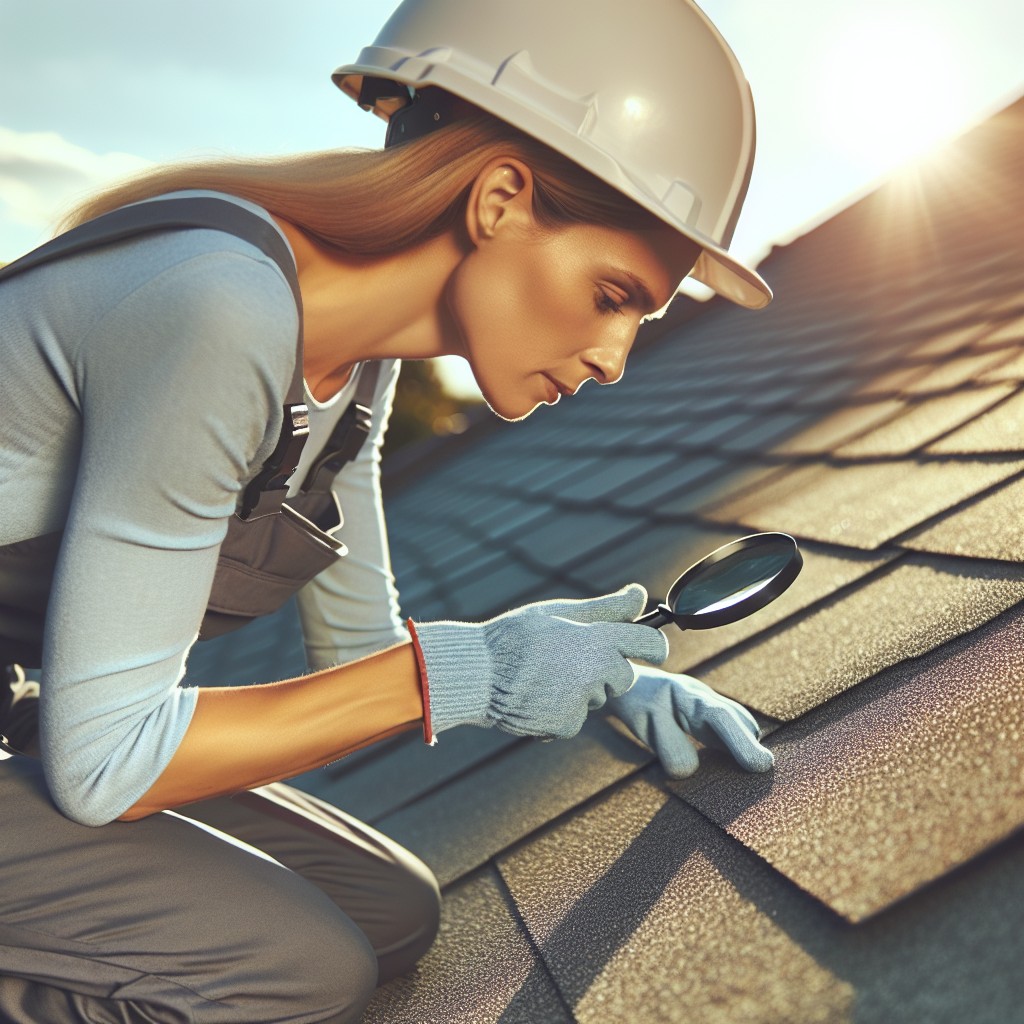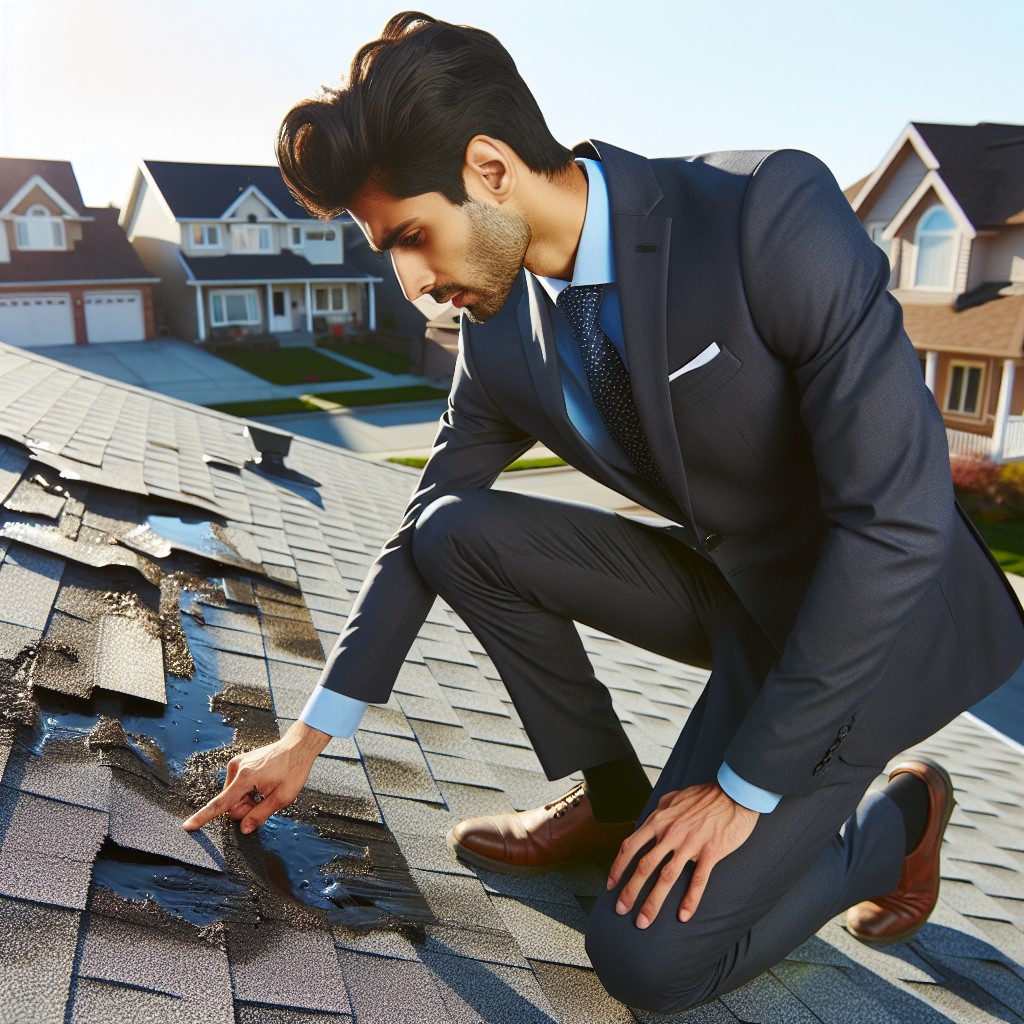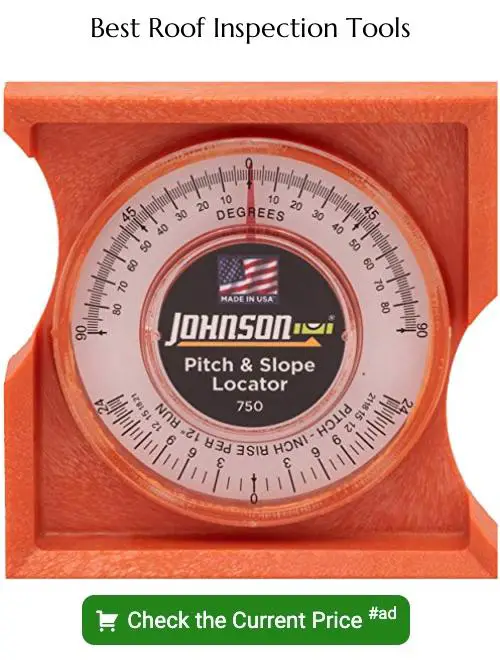Last updated on
Explore the long-term benefits of a free roof inspection because it can save you from costly repairs and enhance your home’s safety and durability.
Understanding the condition of your roof is essential to maintain the integrity of your home, and a free roof inspection can serve as a crucial preventative measure. Such inspections offer a host of benefits including peace of mind, cost savings by addressing issues early, prolongation of your roof’s lifespan, and potential advantages with your homeowners’ insurance.
Moreover, they can be a compelling selling point if you’re looking to put your property on the market. However, it’s not all straightforward; you’ll encounter common issues like shingle deterioration and flashing problems, and it’s important to understand both the breadth and limitations of these free services.
This article guides you through what to expect, from structural assessments to spotting pesky moss growth, and offers clear steps on how to schedule your no-cost roof check-up with a reputable local provider.
Key takeaways:
- Benefits of a free roof inspection: peace of mind, cost savings, extended roof lifespan, insurance advantages, selling point.
- Common roof problems: shingle deterioration, flashing issues, wood rot, moss growth, ventilation problems.
- What to expect during an inspection: structural assessment, shingle condition check, flashing inspection, moss and debris evaluation.
- Limitations of a free inspection: surface-level focus, potential exclusion of roofing accessories, limited time, potential sales pitch.
- How to schedule a free roof inspection: research local companies, contact and inquire, provide roof details, confirm appointment.
Benefits of a Free Roof Inspection

A free roof inspection can offer homeowners peace of mind and potential cost savings. By identifying minor issues before they turn into significant problems, property owners can prevent large-scale repairs that could be both disruptive and expensive. This proactive measure can help extend the lifespan of the roof by ensuring that all components are in good condition and functioning correctly.
Regular inspections can also uncover hidden damage that may not be visible from the ground or to the untrained eye. This includes subtle signs of water damage, cracked tiles or shingles, and issues with flashing. Detecting these problems early is vital, as water infiltration can lead to major structural damage over time.
Moreover, after an inspection, homeowners often receive valuable tips on maintenance practices that can further enhance the durability of their roofs. This guidance is instrumental in protecting the investment they’ve made in their property. Many insurance companies favor owners who conduct routine roof inspections, sometimes offering reduced premiums as proof of diligent upkeep guards against preventable damage claims.
Lastly, for those considering selling their property, a recent roof inspection can be a compelling selling point. It assures potential buyers of the house’s condition and demonstrates the owner’s commitment to maintaining the property.
Identifying Common Roof Problems

During a thorough inspection, several issues might come to light which, if neglected, can lead to more significant damage. Shingle deterioration, such as curling, cracking, or missing shingles, is a telltale sign of a roof reaching the end of its lifespan. Inspectors also look for granules from asphalt shingles accumulating in gutters, as this indicates advanced wear.
Damaged or improperly installed flashing around vents, chimneys, and skylights can allow water to seep in, causing leaks that might not be immediately noticeable from the interior of the home. Soft spots on the roof could suggest wood rot or water saturation in the underlying decking, a significant concern for structural integrity.
Moss and algae growth are not just aesthetic issues; they hold moisture against the roof surface, potentially damaging roofing materials. In areas with heavy snowfall, ice dams can form at the roof’s edge, preventing melting snow from draining and leading to water intrusion.
Ventilation is another critical aspect; poor attic ventilation can cause heat and moisture buildup, reducing insulation efficiency and paving the way for mold and mildew growth. Lastly, gutter systems are inspected for clogs or damage, as these can cause overflow and subsequent water damage to the roof and foundation.
What to Expect During a Roof Inspection
During a typical roof inspection, the inspector will initially examine the roof’s structure to ensure it is sound and free from sagging. They will also check for signs of damage or wear, such as missing, curled, or cracked shingles, as well as the condition of the nails and fasteners. The integrity of the roof’s flashing — the materials, usually metal, that redirect water from areas prone to leakage, such as chimneys and vents — is another critical checkpoint.
The professional will scrutinize for moss, algae growth, or debris collection, which can hold moisture and deteriorate roofing materials over time. Gutters and downspouts are inspected for blockages and proper fastening, as clogged or faulty drainage can lead to water damage. Additionally, they will assess ventilation systems to ensure that there is adequate airflow to prevent heat and moisture buildup that can reduce the roof’s lifespan.
The inspection may involve both an interior and exterior review. On the inside of the property, they will look for water stains, mold, or other indications of water penetration in the attic space and ceilings. Externally, they will also check the condition of fascia and soffit boards for rot or damage, which is essential for preventing critter invasions and water ingress.
Inspectors might use tools such as drones for a closer look at hard-to-reach areas, minimizing the risk of damage from foot traffic on your roof. After the inspection, the homeowner should expect a comprehensive report detailing the inspector’s findings and recommendations for any needed repairs or maintenance.
Limitations of a Free Roof Inspection
While a no-cost inspection can be valuable for a baseline assessment of your roof’s condition, it’s essential to be aware of the potential constraints. Typically, these evaluations may not be as comprehensive as paid services. They might focus on surface-level issues, potentially overlooking in-depth problems like underlying structural damage or insulation deterioration.
Moreover, the inspection may not always include a thorough check of the roofing accessories, such as gutters and vents, which are crucial for overall roof performance.
Some inspectors offering free services might also have limited time per inspection, leading to a more cursory overview. Lastly, be mindful that a free inspection could lead to a sales pitch for repair or replacement services, which can put pressure on homeowners to make immediate decisions. It’s important to remember that you are not obligated to employ the services of the inspector after receiving the free assessment.
How to Schedule a Free Roof Inspection
To arrange a complimentary roof inspection, start by researching local roofing companies that offer this service. Look for firms with solid reputations and verified customer reviews.
Once you’ve selected a potential company, follow these steps:
- Visit the company’s website to find contact information or an online scheduling tool.
- Call or email the company to inquire about their inspection services and availability.
- Be clear about your needs, whether it’s for routine maintenance or due to a specific concern.
- Prepare to provide basic information about your roof, such as its age, material, and any known issues.
- Inquire if the inspection will include photographs or drone footage for areas that are not easily accessible.
- Before confirming the appointment, ask whether the inspection entails any hidden costs you should be aware of.
- Choose a suitable date and time for the inspection, ensuring you or a representative will be present.
- After scheduling, jot down the confirmation number or ask for an email confirmation to document the appointment details.
Understanding the Roof Report Details
Upon completion of a roof inspection, you will receive a detailed report. This document breaks down the condition of your roof into specific areas, including:
- Materials Assessment: Evaluates the state of shingles, tiles, flashing, and underlayment. Look for notes on wear, damage, and potential leaks.
- Structural Analysis: Highlights the integrity of roofing components such as rafters and trusses. Checks for sagging or other deformities that could signal underlying issues.
- Workmanship Review: Examines the quality of installation and any past repairs. Poor workmanship can lead to premature roofing failures.
- Drainage Evaluation: Ensures gutters, downspouts, and drainage systems are functioning properly. Obstructions or improper slope can lead to water damage.
- Overall Condition: Rates the roof’s general health on a scale, often from “excellent” to “poor”. This implies how imminent repairs or replacement might be.
- Recommended Actions: Suggests steps to address any immediate concerns, maintenance tips, or indicates when a follow-up inspection should occur.
Understanding the specifics of these report components can help you make informed decisions on how to proceed with maintaining your roof’s integrity and functionality.
Tips On Avoiding Roofing Scams
Exercise due diligence by researching the company offering the inspection. A legitimate business should have a verifiable track record, customer reviews, and proper licensing. Review their presence online and through the Better Business Bureau.
Request proof of insurance, including liability and workers’ compensation, to ensure you’re protected in the event of an accident during the inspection.
Be wary of door-to-door solicitors offering free inspections, especially after a natural disaster. Reputable companies rarely resort to high-pressure sales tactics.
Never sign a contract or agreement before the inspection is completed. Scammers may use this to lock homeowners into unnecessary or overpriced repairs.
Avoid inspectors who insist on large down payments or cash-only deals. Professional roofing companies will typically offer written estimates and clearly outlined payment terms.
Demand clear, detailed explanations of any issues found. A credible inspector should be willing to discuss their findings and provide pictures or videos as proof of damage.
Remember, if an offer sounds too good to be true, it likely is. Trust instincts and don’t feel pressured to make immediate decisions without proper due diligence.
Best Practices for Roof Maintenance After an Inspection
Regular upkeep is crucial to extending the lifespan of your roof post-inspection. Here’s how to maintain your roof effectively:
1. Clean your gutters biannually to prevent blockages that can lead to water damage.
2. Inspect for missing or damaged shingles and arrange for prompt repairs to avoid leaks.
3. Trim overhanging tree limbs that can scrape against roofing materials during windy conditions.
4. Look out for moss or algae growth and take appropriate action to remove these, as they can deteriorate roofing components.
5. Ensure proper attic ventilation to mitigate heat and moisture buildup that can damage the roof structure.
6. After severe weather events, perform a visual inspection for potential damage and address any issues immediately.
7. Adhere to manufacturer maintenance guidelines for specific roofing materials.
8. Schedule professional inspections periodically to catch issues that may be invisible to the untrained eye.
Taking these steps will help protect your roof, potentially saving you money and extending the overall performance and life of your roofing system.
Guarantees and Warranties Associated With Roof Inspections
When a professional performs a roof inspection, some companies may offer a warranty on the service. It’s important to understand the specifics of this warranty:
- Scope of Warranty: Warranties typically cover the accuracy of the inspection report and guarantee that significant issues were not overlooked at the time of inspection.
- Duration: Such warranties can vary in length, often ranging from a few months to a year, providing peace of mind in the short term.
- Transferability: Check if the warranty is transferable in case you decide to sell your home; it could be an added selling point.
- Claims: In the event that a defect is missed during the inspection, the warranty might cover certain repair costs. Understand the process for filing a claim to prepare for any future steps you might need to take.
Remember, a warranty should not be the sole factor in choosing an inspection service. Verify the inspector’s credibility and the thoroughness of the inspection itself.
How to Verify the Credentials of a Roofing Inspector
Ensuring the legitimacy of a roofing inspector is crucial for a reliable assessment. Start by checking their licensing; most states require inspectors to hold a valid trade license. You can verify this through your state’s construction licensing board. It’s also prudent to look for membership in professional organizations like the National Roofing Contractors Association (NRCA), which endorses stringent standards for its members.
Insurance is another key factor. A reputable inspector should have liability and workers’ compensation insurance to protect you from potential on-site accidents. Don’t hesitate to ask for proof of insurance and check that it is current.
Additionally, look into the inspector’s experience and reputation by reading online reviews and asking for references. This step gives you insight into their professionalism and the quality of their work. Lastly, confirm if they provide a detailed roof inspection report, which reflects their thoroughness and accountability in the process.
The Importance of Timely Inspections for Roof Longevity
Regular and well-timed roof inspections play a crucial role in extending the lifespan of your roofing system. Detecting issues early, before they escalate into major problems, can save you from costly repairs or even a full roof replacement down the line. Here are some salient points to help you understand the benefits:
- Seasonal Checks: Inspecting your roof after significant weather changes —winter thaw or a storm season— can catch damage from extreme conditions.
- Preventive Action: Small concerns like cracked shingles or minor leaks can be addressed promptly, preventing water infiltration that can lead to structural damage.
- Warranty Preservation: Many roofing warranties require routine inspections to remain valid, keeping your investment protected.
- Energy Efficiency: Regular inspections can identify problems that may be causing energy loss, such as poor insulation or ventilation issues.
- Resale Value: Maintaining a well-inspected roof contributes to your home’s overall value, ensuring that it remains an asset if you decide to sell.
Effective, periodic checks maintain your roof’s integrity and assure peace of mind about your home’s topmost protection.
FAQ
How much does a roof inspection cost in US?
In the US, the cost of a roof inspection fluctuates between $75 to $600, with the average cost hovering around $220, largely dependent on the sophistication of the inspection methods used by the roofing specialist.
How much does a roof inspection cost in San Diego?
The cost of a roof inspection in San Diego ranges from $300 to $800, depending on the condition and size of the roof.
How much is a roof inspection in Florida?
The cost of a roof inspection in Florida ranges between $250 and $800.
What is the average price range for a roof inspection in New York?
The average price range for a roof inspection in New York usually falls between $200 and $350.
How does the cost of a roof inspection in Texas compare to the national average?
The cost of a roof inspection in Texas typically ranges from $250 to $400, slightly above the national average of $200 to $350.
What factors can influence the cost of a roof inspection in Chicago?
The cost of a roof inspection in Chicago can be influenced by factors such as the size and complexity of the roof, the inspector’s experience, the purpose of the inspection, and any necessary follow-up services.





